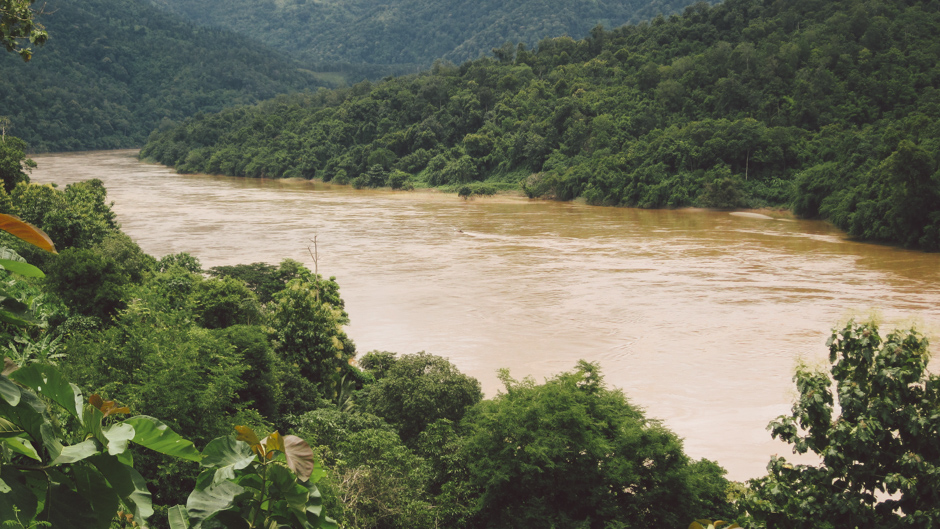Vladimir Smakhtin is the former Director of the UNU Institue for Water, Environment and Health (UNU-INWEH). He has 30 years of experience as a researcher and manager in the broad area of water resources with an emphasis on global and regional water scarcity and food security.
Time to Resolve a Cursed Old Water Problem

“You cannot manage what you do not measure” is a long-familiar saying to many, nowhere more so than in professional water circles at almost every level.
Just as you cannot manage your bank account without knowing how much money you have, it is all but impossible to make informed water management decisions without reliable, sufficient, and freely available water data. Obtaining such data, however (or accessing data from other nations — some of which see security risks in sharing), has always proven difficult.
Knowing the variability of water flows in rivers, for example, requires measurements made over time at many different locations.
Surprisingly, despite its obvious importance and value, river flow data collection has been declining for decades now, with literally thousands of gauging stations in many countries, including large ones in the US, Canada, Russia, and Australia — closed in the 1980s, 1990s and 2000s.
River flow in most developing countries of the global South has never been measured well (and what was measured was seldom properly archived).
Even more limited observed data are available on groundwater, or on withdrawals and abstractions from aquifers and various other water sources globally.
In “un-gauged” river basins, (i.e., those in most of the world), we typically rely on mathematical models to simulate hydrology, to predict the impact of water management options, or to develop future scenarios based on changing climate or other drivers of change.
Global models help us to “think globally” but do not help to “act locally” — they are just too coarse for that.
And all models are, naturally, simplifications of reality; they require calibration through on-the-ground observations.
Understanding of the importance of various water data seems lacking beyond the water community. It is not a ‘sexy’ subject and does not hit the headlines. Nor does water data collection attract sufficient funding.
It is also not a “quick win”. Observed data collection should span at least 30 years at the same location so that natural variability and / or trends can be captured. Supporting such long-term monitoring is often beyond the short-term interests associated with political careers; and there are, of course, always more burning issues to deal with.
It seems increasingly unlikely, therefore, that the water sector’s need for data can be met by traditional (i.e., on-the-ground) approaches. Satellite technologies offer a promising solution.
Remotely sensed data on land use and precipitation are already commonly used as input to water models — to simulate river flow and other water components in un-gauged river basins. But it is probably timely to ask if satellite data can help us to switch even more radically from traditional on-the-ground observations to direct measurements by satellite of river flow, and all other components of the water cycle and all water uses.
It is not hard to imagine that we could measure water flows using orbiting technology with reliable accuracy. In fact, it is coming close to that. Already a car’s license plate can be read from space, and some remote sensing technologies are able to penetrate water and soil.
Also, the accuracy of on-the-ground “observations” themselves may be overrated. Some of them are not much different from “modelled” ones: water discharge is not regularly measured but essentially derived from measured water level.
Putting new technologies to work at large scale in the water world may have found its time.
Direct water observations obtained via satellites could be made at a much larger number of locations, and will, naturally, cross the national boundaries, making such new data sharing unrestricted. They may also accelerate the sharing of existing conventional observed national water data, as otherwise they could quickly become obsolete.
In a brilliant, witty commentary in 2007, Stuart Hamilton predicted that “…the 2000s will be remembered as the last decade of real hydrology. We entered this decade with hydrology based on data, but we will be leaving this decade with pseudo-hydrology based on pseudo data.”
Looking back today, it indeed looks like that prediction quietly materialised. We are leaving future generations with little new systematically obtained and well-maintained observed data, but just sophisticated models and industrial-scale simulated data. And the sheer volume and variety of such data, which Hamilton referred to as “genetically modified observations”, inhibits our ability to digest them. We moved from one unresolved problem (the need for sufficient, accurate on-the ground observations) to another (regular remote sensing measurements that are not yet entirely fit for purpose).
But there is growing hope that our water data needs will one day be met. Goal 6 of the 17 Sustainable Development Goals (SDGs), to be achieved by 2030, concerns the global water challenge and includes measurable indicators of progress. These indicators compel countries to join the quest for accurate quantification of national water resources — river flow, groundwater and water withdrawals.
And recently the High-Level Panel on Water launched a focused “data initiative” that aims to overcome all data-related hurdles on the way to achieving the SDGs.
We have the means to do much better in measurement of water. And when that potential is realised, perhaps then we will do much better, globally and locally, managing this vital resource as well.
•••
This article first appeared on Inter Press Service News.
Copyright IPS News, all rights reserved.


